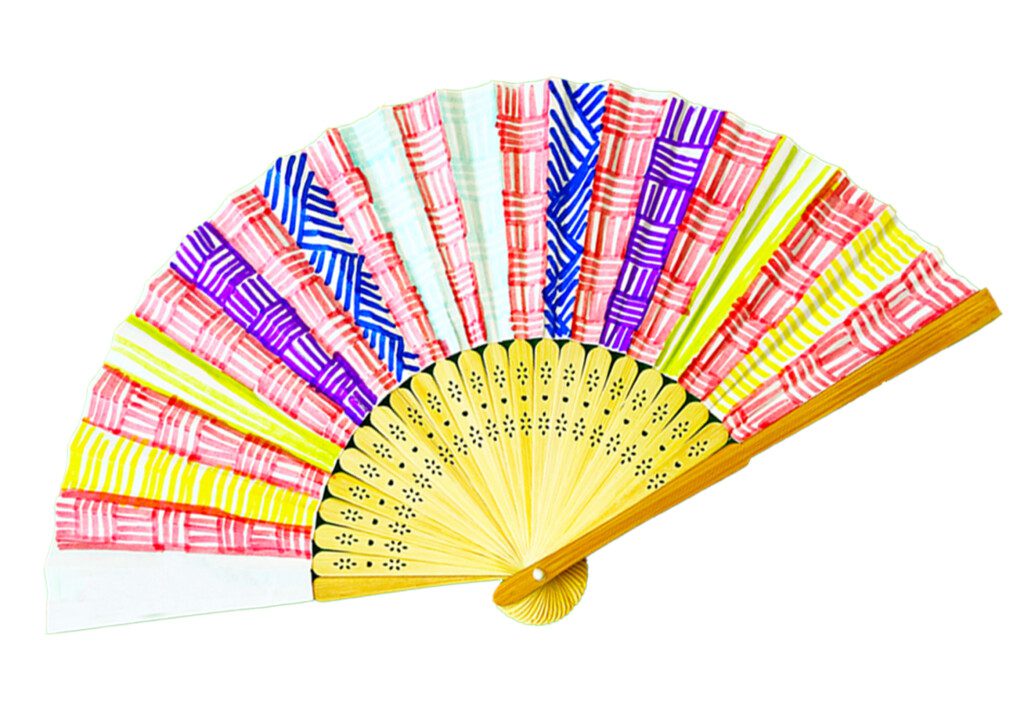Create your own Japanese fan with #MuseumMake – a fun craft activity inspired by The Powell-Cotton Museum.
Three things you should know about Japanese fans
How old are they?
Fans have a long history in Japan. The earliest evidence of the fan was discovered in the wall paintings of a burial mound dating from the 6th century in Fukuoka. The oldest surviving wood strip fan (Hi-ogi) was found in Nara City, Japan and dates from the 7th century.
What were they made of?

Today we are going to take a closer look at the sensu, a folding fan. Traditionally made of paper or cloth on bamboo slats which are held together with a pivot at one end.
Who used them?
In the early years of the Heian period (794 – 1185) only aristocrats, wealthy merchants, and Samurai could afford a sensu. These fans were used in ceremonies, rituals, and performances. They were used as a form of material to write on to communicate messages, as an instructive tool to educate, a symbol of status, and even as a weapon in the hands of a Samurai.
 The tessen is the war fan of a Samurai. This folding fan had outer spokes made of heavy plates of iron which were designed to look like normal, harmless folding fans or solid clubs shaped to look like a closed fan. Samurai could take these fans to places where swords or other overt weapons were not allowed. This meant that the Samurai were never really unarmed and could use the tessen to defend themselves in case of an emergency.
The tessen is the war fan of a Samurai. This folding fan had outer spokes made of heavy plates of iron which were designed to look like normal, harmless folding fans or solid clubs shaped to look like a closed fan. Samurai could take these fans to places where swords or other overt weapons were not allowed. This meant that the Samurai were never really unarmed and could use the tessen to defend themselves in case of an emergency.
In 1854 Japanese ports reopened to trade with the wider world, and the Japanese fan became more widely popular due to advanced designs and superior build quality. Ironically, after a time, they were even being exported to China and abroad via the Silk Road.
You can see just how far-reaching their popularity was by looking at this painting from the 17th century, where Queen Elizabeth I of England was holding these Japanese fans shown as a sign of wealth. By the 18th and 19th centuries, these fans had even become desirable fashion accessories for well-to-do European women. Even Queen Victoria has a portrait of her with a fan in 1887 for her Diamond Jubilee.

They are still popular to this day for example, in today’s sporting events, they are used during sumo wrestling events. During these events, referees use the hand fans to control the contestant. Beyond sumo wrestling, they can be used as a wedding invitation for your relatives, or even a birthday present.
What next?
You could
- decorate your own fan with #MuseumMake. Download the activity sheet below.


